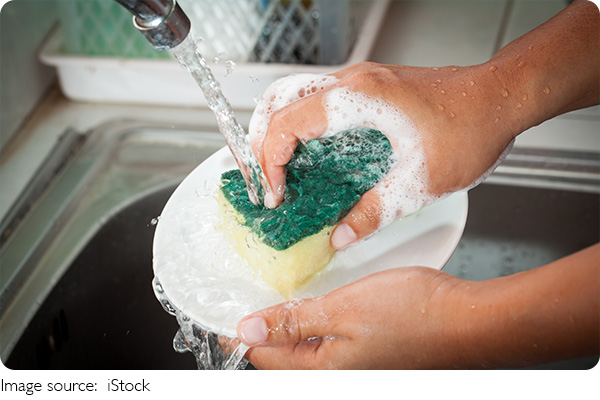Grease Cleaning Tricks

We've all been there—making a nice stir-fry or deep-frying something delicious, only to find the stovetop, backsplash, and even the cabinet handles covered in sticky, yellowish grease.
It builds up fast, grabs onto dust, and becomes hard as glue if we leave it too long. But don't worry—we don't need harsh chemicals or endless scrubbing. With the right steps and a few home items, we can wipe it off in no time.
Start with warm water and dish soap
Before grabbing anything strong, let's begin with the basics. Mix a few drops of dishwashing liquid into warm water. Dish soap is great at breaking down grease because it's made for oily plates, so it works on kitchen surfaces too. Dip a microfiber cloth or sponge into the soapy water, wring it out, and gently wipe the greasy areas. For light grease, this may already do the trick!
Make a homemade vinegar spray
For tougher grease that's been sitting for days (or weeks—no judgment), white vinegar is our best friend. Just mix equal parts white vinegar and water in a spray bottle. Spray it directly on the greasy spots—like the range hood, walls near the stove, or oven door—and let it sit for 5 to 10 minutes. Then wipe it off with a damp cloth. The vinegar helps loosen the grease and makes it easier to clean.
Add baking soda for extra power
Still dealing with greasy buildup that won't budge? Time to bring in baking soda. Sprinkle a small amount on the greasy surface or dip your damp sponge into it. The gentle grit of baking soda helps lift grease without scratching, and it reacts slightly with vinegar to break things down. After scrubbing lightly, rinse the surface with clean water or wipe it down with a damp cloth.
Use lemon juice for a fresh clean
Want to add a natural shine and pleasant smell while cleaning? Lemon juice works beautifully. It cuts through grease and leaves behind a refreshing scent. You can squeeze a lemon into your vinegar-water spray, or rub half a lemon directly onto greasy areas (like stove grates or taps). Let it sit for a bit, then rinse or wipe clean.
Don't forget the hidden greasy spots
Grease loves to hide in places we don't always check: under the range hood, the edge of cabinet doors, and the sides of the stove. We should make it a habit to do a quick check of these spots. Using the same vinegar or baking soda method, we can keep these sneaky areas clean before they become sticky nightmares.
Keep cleaning tools ready
To make cleaning quicker next time, it helps to keep a small cleaning kit in the kitchen. Ours can include a spray bottle of vinegar solution, a small tub of baking soda, a microfiber cloth, and maybe a spare sponge. That way, whenever we spill oil or cook a greasy meal, we can do a 2-minute wipe right away.

How to prevent grease buildup
Here's a secret: the best way to deal with kitchen grease is to stop it from building up in the first place. After cooking, we can wipe down the stove and counter quickly before the grease hardens. Also, using a lid or splatter guard when frying can reduce oil spraying onto nearby surfaces. Little habits like these make big differences over time.
Let's keep our kitchen feeling fresh!
Lykkers, if you've been putting off cleaning those greasy corners, now's a great time to try these easy tricks. The sooner we tackle oil stains, the easier they are to clean. Which method are you going to try first—vinegar spray or baking soda scrub? Let us know how it goes, and feel free to share your own tips too. Together, let's keep our kitchens clean, shiny, and ready for the next delicious meal!
-
 Savor Jacksonville JoyCraving bold eats in Jacksonville? Locals rave about a pizza joint with quirky art and piles of cheese. See where to snag a slice.
Savor Jacksonville JoyCraving bold eats in Jacksonville? Locals rave about a pizza joint with quirky art and piles of cheese. See where to snag a slice. -
 Van Gogh: A Master’s JourneyDiscover Van Gogh’s masterpieces in iconic museums worldwide—where will his vibrant legacy take you next?
Van Gogh: A Master’s JourneyDiscover Van Gogh’s masterpieces in iconic museums worldwide—where will his vibrant legacy take you next? -
 Sleep: Mental Health?Why Does Missing Sleep Trigger Mood Swings? What's Happening Inside Your Brain?!
Sleep: Mental Health?Why Does Missing Sleep Trigger Mood Swings? What's Happening Inside Your Brain?!